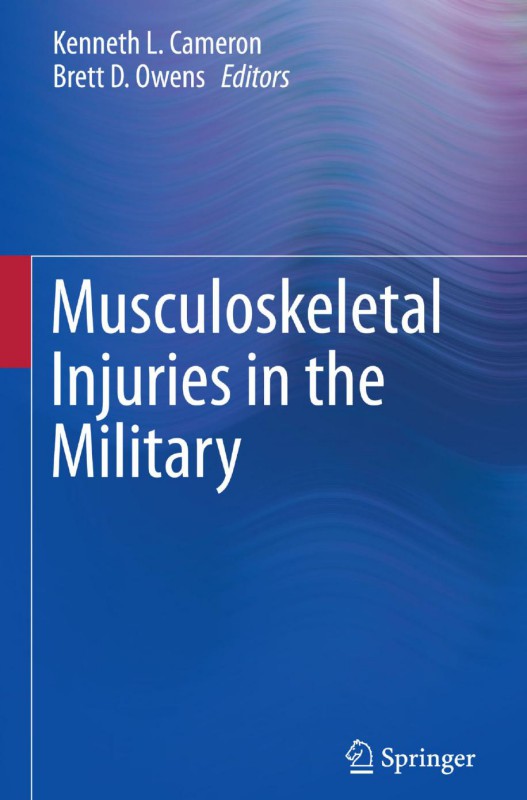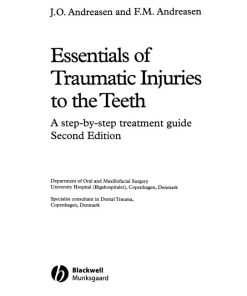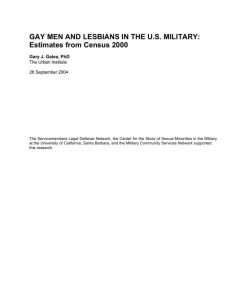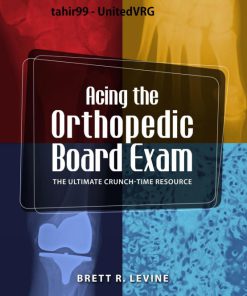Musculoskeletal Injuries in the Military 1st Edition by Kenneth L Cameron, Brett D Owens ISBN 1493929844 9781493929849
$50.00 Original price was: $50.00.$25.00Current price is: $25.00.
Authors:Unknown , Author sort:Unknown , Published:Published:Sep 2015
Musculoskeletal Injuries in the Military 1st Edition by Kenneth L Cameron, Brett D Owens – Ebook PDF Instant Download/Delivery. 1493929844, 9781493929849
Full download Musculoskeletal Injuries in the Military 1st Edition after payment
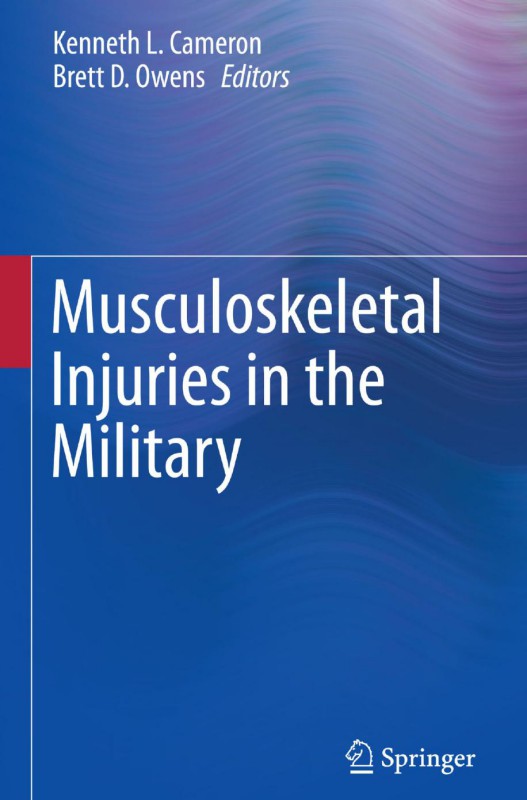
Product details:
ISBN 10: 1493929844
ISBN 13: 9781493929849
Author: Kenneth L Cameron, Brett D Owens
This authoritative reference examines the causes of–and offers workable solutions to–the widespread problem of musculoskeletal injuries among armed forces personnel. Specific chapters on combat, non-combat, training, and fitness injuries shed necessary light on the nature and scope of the epidemic, including impact on active service members and the resulting quality of life issues in veterans. An overview of these injuries by anatomic region highlights treatment, disability, and prevention issues in military settings. The book also translates the standard public health model for preventing injuries into military context, giving professionals guidelines for developing strategies tailored to the unique strengths and risks of this population. Featured in the coverage: · The burden of musculoskeletal injuries in the military. · Traumatic combat injuries. · Deployment and non-battle injuries. · Epidemiology of musculoskeletal injuries by anatomic region. · Application of the public health model for injury prevention. · Barriers to injury prevention in the military. Its depth of detail makes Musculoskeletal Injuries in the Military critical reading for orthopedic surgeons, physical therapists, athletic trainers, military leaders, military and VA healthcare staff including physicians and policymakers, public health and injury prevention professionals, occupational health and safety professionals, musculoskeletal injury and disease researchers, and veterans’ health advocacy groups.
Musculoskeletal Injuries in the Military 1st Table of contents:
Part I
The Spectrum of Musculoskeletal Injuries in the Military
Chapter-1
The Burden of Musculoskeletal Injuries in the Military
Introduction
Combat and “Non-battle” Injuries
Acute Traumatic Joint Injuries in Military Populations
Degenerative Joint Disease in Military Populations
Anatomy of an Epidemic
Summary
References
Chapter-2
Traumatic Combat Injuries
Introduction
Incidence Rates and Epidemiology of Combat Musculoskeletal Wounds
Wounding Mechanisms
Combat-Related Injuries and Wounding Patterns
Outcomes and the Cumulative Burden of Combat-Related Musculoskeletal Injuries
Conclusions: Current State and Opportunities for the Future
References
Chapter-3
The Burden of Deployment-Related Non-battle Injuries (NBIs) and Their Impact on the Musculoskeletal
Introduction
The Historical Impact of Disease and Non-battle Injury
Non-battle Injuries During Contemporary Military Operations
Operation Desert Storm/Shield and Military Deployments in the Early 1990s
Operations Enduring Freedom and Iraqi Freedom
Estimating the Burden and Resource Impact of Non-battle Injuries During Military Deployments
Preventing Non-battle Injuries During Military Deployments
Conclusion
References
Chapter-4
Sports and Exercise-Related Injuries in the Military
Introduction
Sports Injury Surveillance and Epidemiology in the Military
Factors Associated with Musculoskeletal Injury During Sports Participation in the Military
Extrinsic Risk Factors
Intrinsic Factors
New Fitness Trends
Summary and Conclusions
References
Chapter-5
Musculoskeletal Injuries During Military Initial Entry Training
Introduction to Initial Entry Training (IET) Injuries
Military Entrance Processing Station Physical
IET Requirements
Estimating the Cost of Injuries
Bone Stress Injuries
Risk Factors for Bone Stress Injuries
Bone Stress Injury Assessment and Diagnosis
Hip, Pelvis, and Upper Leg Stress Injuries
Femoral Neck Stress Injuries
Pelvic Stress Injuries
Femoral Shaft Stress Injuries
Lower Leg Stress Injuries
Tibial Stress Injuries
Fibular Stress Injuries
Foot Stress Injuries
Metatarsal Stress Injuries
Calcaneal Stress Injuries
Tarsal Stress Injuries
Anterior Knee Pain
Low Back Pain
Shoulder Instability
Clinical Considerations in IET
Injury Prevention in IET
Conclusions
References
Chapter-6
Disability Associated with Musculoskeletal Injuries
Introduction
Upper Extremity
Shoulder Instability and Superior Labrum Anterior and Posterior Tears
Rotator Cuff
Upper Extremity Amputations
Upper Extremity Limb Salvage
Spine
Lower Extremity
Cartilage Injuries
Anterior Cruciate Ligament Injury
Meniscus
Lower Extremity Amputations
Lower Extremity Limb Salvage
Osteoarthritis
Concomitant Mental Health Conditions
Traumatic Brain Injury
Posttraumatic Stress Disorder
General Return to Duty
Summary
References
Part II
The Epidemiology of Musculoskeletal Injuries by Anatomic Region
Chapter-7
Shoulder Injuries
Introduction
Combat Shoulder Wounds
Shoulder Girdle Injuries
Acromioclavicular Joint Sprains
Clavicle Fractures
Glenohumeral Joint Instability
Instability
Superior Labrum Anterior Posterior Tears
Pectoralis Major Tears
Degenerative Conditions
Impingement and Rotator Cuff Disease
Glenohumeral Joint Osteoarthritis
Conclusions
References
Chapter 8
Elbow, Wrist, and Hand Injuries
Introduction
Part 1: Peacetime/Non-battle Injuries
Distal Biceps Tendon Rupture [4]Fractures of the Forearm
Olecranon Bursitis
Medial and Lateral Epicondylitis
Triceps Tendon Rupture
Scaphoid Fractures
Hand and Wrist Soft Tissue Injuries
Injuries to the Hand
Hand Fractures
Hand Soft Tissue Injuries
Part 2: Combat Trauma
Epidemiology of Blast Trauma
Burn Injuries
Nerve Injuries
Early Management
Upper Extremity Reconstruction
Late Sequelae of Combat Trauma
Conclusions
References
Chapter-9
Hip Injuries
Introduction
Anatomy
Intra-articular Hip Disorders
Labral Tears
Femoroacetabular Impingement
Osteoarthritis
Stress Fractures
Extra-articular Disorders
Greater Trochanteric Pain Syndrome
Miscellaneous Hip Disorders
Conclusions
References
Chapter-10
Knee Injuries
Overview
Acute Meniscal Injury
Cartilage
Ligament Injuries
Anterior Cruciate Ligament (ACL)
Multiligamentous Knee Injury and Knee Dislocation
Patellofemoral Joint
Dislocations
Patellofemoral Pain Syndrome
Osteoarthritis
Activity-Specific Injuries
Parachuting
Combatives
Basic Training
Conclusions
References
Chapter-11
Lower Leg, Ankle, and Foot Injuries
Lower Leg
Tibial Stress Fracture
Introduction
Epidemiology
Chronic Exertional Compartment Syndrome
Introduction
Epidemiology
Ankle
Ankle Sprain
Introduction
Epidemiology
Non-modifiable Risk Factors
Modifiable Risk Factors
Preventative Measures
Osteochondral Lesions of the Talus
Introduction
Epidemiology
Peroneal Tendon Pathology
Foot
Achilles Disorders
Epidemiology
Plantar Fasciitis
Introduction
Epidemiology
Lisfranc Injuries
Introduction
Epidemiology
Metatarsal Fractures
Fifth Metatarsal Base Fracture
Metatarsal Stress Fracture
References
Chapter-12
Thoracic and Lumbar Spine Injuries
Introduction
Causes of Injury
Occupational Risk Factors
Military Factors
Individual Factors
Combat-Related Spine Trauma
References
Chapter-13
Cervical Spine and Neck Injuries
Introduction
History of Combat Spine Injury
Epidemiology of Cervical Spine Injury in the US Military
Characterization of Cervical Injuries
Nontraumatic Cervical Spinal Pain
Cervical Trauma
Mechanism of Injury
Associated Injuries
Outcomes
Morbidity
Mortality
Evaluation and Management of Combat Cervical Trauma
Echelons of Care
Echelons I and II
Echelon III
Echelons IV and V
Conclusion
References
Part III
Public Health Strategies for Injury Prevention and Treatment in the Military
Chapter-14
Application of the Public Health Model for Musculoskeletal Injury Prevention Within the Military
Introduction
Early Application of the Public Health Model for Injuries in the Military
Contemporary Applications of the Public Health Model for Injury Prevention in the Military
Integrating Health Behavior into Injury Prevention Interventions: Applications for the Public Health
Summary
References
Chapter-15
Successful Injury Prevention Interventions
Introduction
Successful Injury Prevention
Essential Elements for Military Injury Prevention Program Success
Education
Surveillance
Leadership Support
Research and Program Evaluation
Successful Injury Prevention Strategies
Risk Factor Identification
Preventing Overtraining
Training Modification—Decreasing Running Mileage
Training Modification—Physical Readiness Training Implementation
Ankle Bracing—Athletic and Training Activities
Ankle Bracing—Parachuting
Multiaxial, Neuromuscular, Proprioceptive, and Agility Training for Injury Prevention in Troops
Successful Injury Prevention Systems
Sports Medicine and Rehabilitation Team Centers—SMART Centers
Sports Medicine Injury Prevention—SMIP in USMC
Stress Fracture Reduction System—Army Basic Training
Future Recommendations
Biomarkers
Using Movement Screening
Shifting Resources to the Left
Conclusions
References
Chapter-16
Overcoming Barriers to Injury Prevention in the Military
Introduction
Overview of the RE-AIM Model
R: Reach the Target Population
Strategic-Level Barriers
Operational-Level Barriers
Tactical-Level Barriers
E: Efficacy/Effectiveness
Strategic-Level Barriers
Operational-Level Barriers
Tactical-Level Barriers
A: Adoption by Target Settings, Institution, and Staff
Strategic-Level Barriers
Operational-Level Barriers
Tactical-Level Barriers
I: Implementation (Consistency and Costs of Delivery of Intervention)
Strategic-Level Barriers
Operational-Level Barriers
Tactical-Level Barriers
M: Maintenance of Intervention Effects in Individuals and Settings
Strategic-Level Barriers
Operational-Level Barriers
Tactical-Level Barriers
People also search for Musculoskeletal Injuries in the Military 1st:
musculoskeletal injuries in the military
musculoskeletal injuries in the military training environment
what are the three basic causes of musculoskeletal injuries
what are the types of musculoskeletal injuries
musculoskeletal injuries in the army
You may also like…
eBook PDF
Gay Men and Lesbians in the US Military Estimates from Census 2000 1st Edition by Gary J Gates ISBN

